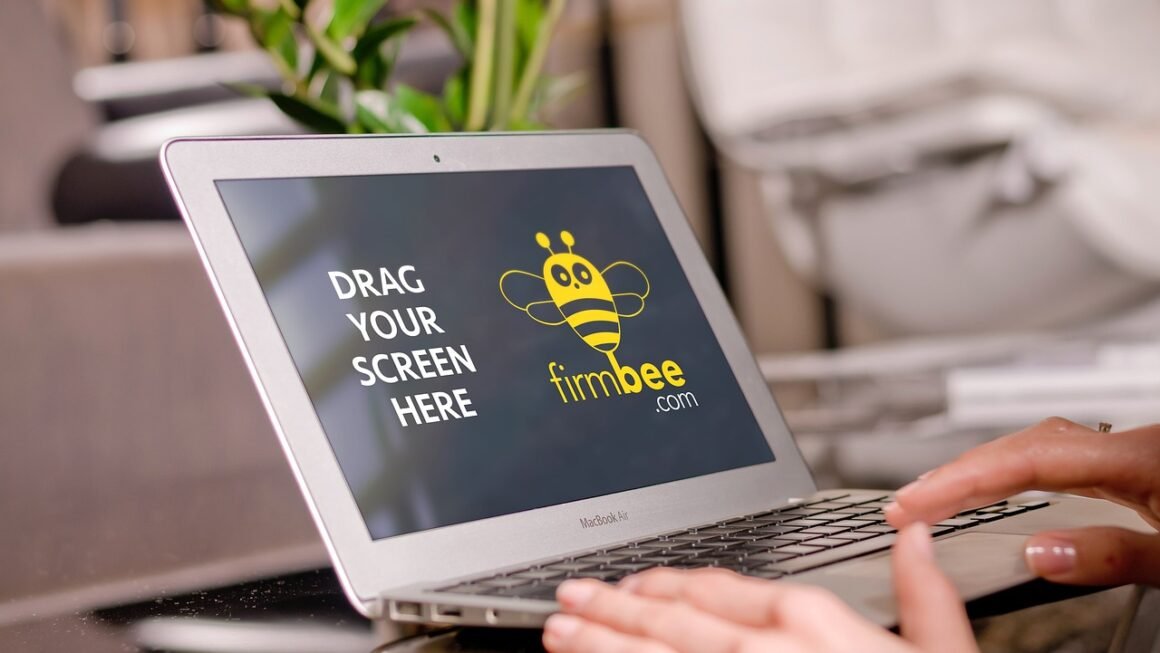WordPress design is more than just selecting a pretty theme. It’s a strategic approach to crafting a website that not only looks visually appealing but also effectively communicates your brand, engages your audience, and achieves your business goals. A well-designed WordPress site can be a powerful engine for lead generation, sales, and brand building. Let’s dive into the world of WordPress design and explore the key elements that make a website truly outstanding.
Understanding the Core Principles of WordPress Design
User-Centric Approach
WordPress design should always prioritize the user experience. This means creating a website that is intuitive, easy to navigate, and provides visitors with the information they need quickly and efficiently.
- Intuitive Navigation: Ensure your menu structure is clear and logical, allowing users to find what they’re looking for with minimal effort.
- Fast Loading Times: Optimize images and leverage caching plugins to ensure a smooth and responsive browsing experience. Statistics show that 47% of consumers expect a web page to load in 2 seconds or less (Source: Akamai).
- Mobile-First Design: With the majority of web traffic coming from mobile devices, it’s crucial to design your WordPress site with responsiveness in mind. Use a responsive theme or consider mobile-specific plugins.
- Accessibility: Make sure your website is accessible to users with disabilities by following WCAG guidelines. This includes using alt text for images, providing sufficient color contrast, and ensuring keyboard navigation.
Branding and Visual Identity
Your WordPress design should reflect your brand’s personality and values. Use consistent colors, fonts, and imagery to create a cohesive visual identity.
- Color Palette: Choose a color palette that aligns with your brand and evokes the desired emotions. Consider using tools like Adobe Color to create harmonious color schemes.
- Typography: Select fonts that are readable and consistent with your brand’s style. Limit the number of fonts used to avoid visual clutter. Google Fonts offers a wide variety of free fonts to choose from.
- Imagery: Use high-quality images and videos that are relevant to your content and brand. Avoid using stock photos that look generic or staged. Consider hiring a professional photographer or videographer to capture authentic visuals.
- Logo Integration: Prominently display your logo in the header and footer of your website. Ensure it’s easily recognizable and scales well on different devices.
Content Strategy and Information Architecture
A well-structured WordPress site requires a clear content strategy and information architecture. Plan your content carefully and organize it in a way that makes sense to your audience.
- Keyword Research: Conduct keyword research to identify the terms your target audience is searching for. Incorporate these keywords naturally into your content and page titles.
- Content Planning: Create a content calendar to plan and schedule your content creation efforts. This will help you stay organized and consistent with your publishing schedule.
- Information Hierarchy: Organize your content into categories and subcategories to create a clear information hierarchy. This will help users find the information they need quickly and easily.
- Clear Call-to-Actions (CTAs): Guide your visitors towards taking desired actions, such as signing up for a newsletter, requesting a quote, or making a purchase. Use prominent CTAs that are visually appealing and easy to understand.
Choosing the Right WordPress Theme
Free vs. Premium Themes
WordPress offers a vast selection of both free and premium themes. Understanding the differences between them is crucial for making the right choice.
- Free Themes:
Pros: Cost-effective, readily available, good for basic websites.
Cons: Limited customization options, may lack advanced features, less support, potential security vulnerabilities.
- Premium Themes:
Pros: Extensive customization options, advanced features, dedicated support, regular updates, improved security.
Cons: Costlier than free themes, can be overwhelming with options.
Selecting a Theme Based on Your Needs
Consider your specific requirements and goals when choosing a WordPress theme.
- Business Websites: Look for themes with professional designs, built-in contact forms, and portfolio capabilities.
- eCommerce Stores: Choose themes that are compatible with WooCommerce and offer features like product galleries, shopping carts, and secure checkout.
- Blogs: Select themes that are optimized for readability and offer features like featured posts, social sharing buttons, and comment sections.
- Performance: Prioritize themes that are lightweight and optimized for speed. Test the theme’s performance using tools like Google PageSpeed Insights.
Theme Customization Options
Explore the customization options offered by different themes before making a decision.
- Theme Options Panel: Many themes come with a built-in theme options panel that allows you to customize various aspects of your website without coding.
- Customizer: The WordPress customizer allows you to preview changes to your website in real-time. Use it to adjust colors, fonts, and other design elements.
- Page Builders: Page builders like Elementor, Beaver Builder, and Divi offer drag-and-drop functionality for creating custom page layouts.
Essential WordPress Plugins for Design Enhancement
Page Builders
Page builders are powerful tools that allow you to create custom page layouts without coding.
- Elementor: A popular page builder with a user-friendly interface and a wide range of widgets and templates.
- Beaver Builder: A reliable page builder known for its stability and ease of use.
- Divi Builder: A visual page builder that comes with the Divi theme and offers advanced customization options.
Image Optimization Plugins
Optimizing images is crucial for improving website performance.
- Smush: A popular image optimization plugin that automatically compresses and optimizes images.
- Imagify: Another great image optimization plugin that offers various compression levels and integrates with CDN services.
- ShortPixel: A powerful image optimization plugin that uses lossy and lossless compression to reduce image file sizes.
Contact Form Plugins
Contact forms are essential for allowing visitors to get in touch with you.
- Contact Form 7: A simple and flexible contact form plugin.
- WPForms: A user-friendly contact form plugin with drag-and-drop functionality.
- Gravity Forms: A powerful contact form plugin with advanced features like conditional logic and payment integrations.
Slider Plugins
Slider plugins can be used to showcase featured content and engage visitors.
- Slider Revolution: A versatile slider plugin with a wide range of animation effects and customization options.
- Smart Slider 3: A responsive slider plugin that offers various templates and features.
- MetaSlider: A simple and easy-to-use slider plugin.
Best Practices for Responsive WordPress Design
Fluid Grids and Flexible Images
Use fluid grids and flexible images to ensure your website adapts to different screen sizes.
- Fluid Grids: Use percentages instead of fixed pixel values to define column widths.
- Flexible Images: Use the `max-width: 100%;` CSS property to ensure images scale proportionally.
Media Queries
Use media queries to apply different styles based on screen size and device type.
- Breakpoints: Define breakpoints for different screen sizes, such as mobile, tablet, and desktop.
- CSS Overrides: Use media queries to override default CSS styles for specific screen sizes.
Testing and Optimization
Test your WordPress site on different devices and browsers to ensure it looks and functions correctly.
- Responsive Design Testing Tools: Use tools like Google’s Mobile-Friendly Test and BrowserStack to test your website’s responsiveness.
- Performance Optimization: Optimize your website’s performance by minimizing HTTP requests, leveraging browser caching, and using a content delivery network (CDN).
Accessibility Considerations in WordPress Design
Semantic HTML
Use semantic HTML tags to provide structure and meaning to your content.
- Headers: Use `
` to `
` tags to create a clear hierarchy of headings.
- Lists: Use `
- ` and `
- ` tags to create unordered and ordered lists.
- Landmark Roles: Use ARIA landmark roles to define the different sections of your page, such as `
Color Contrast
Ensure sufficient color contrast between text and background colors to improve readability.
- WCAG Guidelines: Follow WCAG guidelines for color contrast ratios.
- Color Contrast Checkers: Use online tools to check the color contrast of your website.
Keyboard Navigation
Ensure your website is navigable using the keyboard.
- Focus Indicators: Provide clear focus indicators for interactive elements, such as links and buttons.
- Skip Navigation Links: Include skip navigation links to allow users to bypass repetitive content.
Alternative Text for Images
Provide alternative text for all images to describe their content.
- Descriptive Alt Text: Write descriptive alt text that accurately describes the image.
- Empty Alt Text: Use empty alt text (`alt=””`) for decorative images that don’t convey any important information.
Conclusion
WordPress design is a multifaceted discipline that requires a blend of creativity, technical expertise, and a deep understanding of user experience principles. By focusing on user-centric design, branding, and content strategy, and by leveraging the power of WordPress themes and plugins, you can create a website that not only looks great but also achieves your business goals. Remember to prioritize accessibility and responsiveness to ensure your website is usable and enjoyable for everyone. Keep learning and experimenting to stay ahead of the curve in the ever-evolving world of WordPress design.



